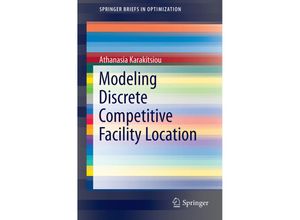This book presents an up-to-date review of modeling and optimization approaches for location
problems along with a new bi-level programming methodology which captures the effect of
competition of both producers and customers on facility location decisions. While many
optimization approaches simplify location problems by assuming decision making in isolation
this monograph focuses on models which take into account the competitive environment in which
such decisions are made. New insights in modeling algorithmic and theoretical possibilities
are opened by this approach and new applications are possible. Competition on equal term plus
competition between market leader and followers are considered in this study consequently
bi-level optimization methodology is emphasized and further developed. This book provides
insights regarding modeling complexity and algorithmic approaches to discrete competitive
location problems. In traditional location modeling assignment of customer demands to supply
sources are made for which the associated costs target the firm and not the customers though
in many real world situations the cost is incurred by the customers. Moreover there may be
customer competition for the provided services. Thus a new methodological framework is needed
in order to encompass such considerations into the modeling and solution process. This book
offers initial directions for further research and development along these lines. Aimed toward
graduate students and researchers in the field of mathematics computer science operational
research and game theory this title provides necessary information on which further research
contributions can be based.

